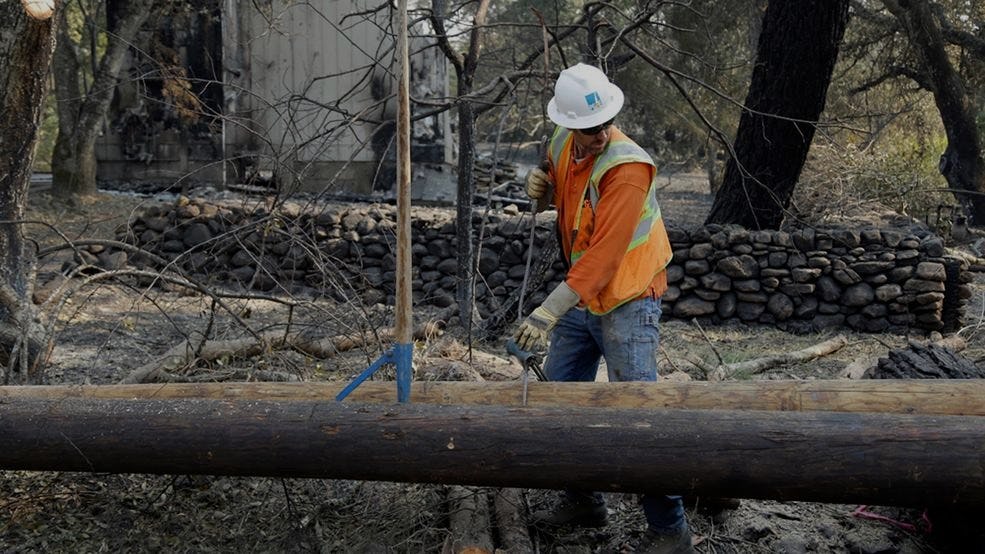

Better Safety Practices
How Would a Publicly Owned Utility Be Safer?
Democratic control and public ownership will mean better oversight over PG&E’s safety practices. The following are possible but aren't currently pursued by a management that's more beholden to investors than to the public.
- A publicly available protocol for shutting off larger lines
- 24/7 monitoring of meteorological conditions
- A more proactive approach to Public Safety Power Shutoffs (PSPS)
- Independent research into known issues and potential additional risks
- Better wages and staffing for frontline PG&E workers and reduction of executive compensation
PG&E’s long history of inadequate safety measures, marked most recently by the past years’ devastating, preventable wildfires, needs to end.
The Profit Motive
PG&E already has the technological capacity to prevent fires by remotely de-energizing its power lines in windy and dry conditions. However, as a for-profit corporation, PG&E is much quicker to turn off power for non-payment than it is to initiate a PSPS, which can displease paying customers as well as shareholders.
PG&E’s profit motive might help to explain why PG&E decided not to turn off power in the days before the Camp Fire, even though the Evaporative Demand Drought Index—which measures how fast the atmosphere will absorb water and dry out the land beneath—was at 100%, indicating the severest drought conditions.
Turning the responsibility of shutting off power over to scientists and public safety officials, rather than PG&E employees who are responsive to customer complaints about lost power, will increase responsiveness to weather conditions.
What PG&E Knows
PG&E already has the information needed to prevent fires as well: since the Camp Fire, PG&E has identified 1,300 new weather stations needed to monitor conditions in high-risk areas. Fire scientists and electrical safety specialists not employed by PG&E must independently research and corroborate the need for these improvements and recommend additional measures if necessary.
PG&E does have a real shortage of inspectors: the California Public Utilities Commission found that PG&E was regularly fabricating its records of gas inspections over five years due to inadequate staffing, which led to inspectors writing false reports about gas lines they hadn’t had time to visit. To be clear, this was not worker laziness — it was a profit-motivated decision that came from upper management. We need to offer stable, well-paying, union jobs to PG&E workers, and stop rewarding irresponsible executives.